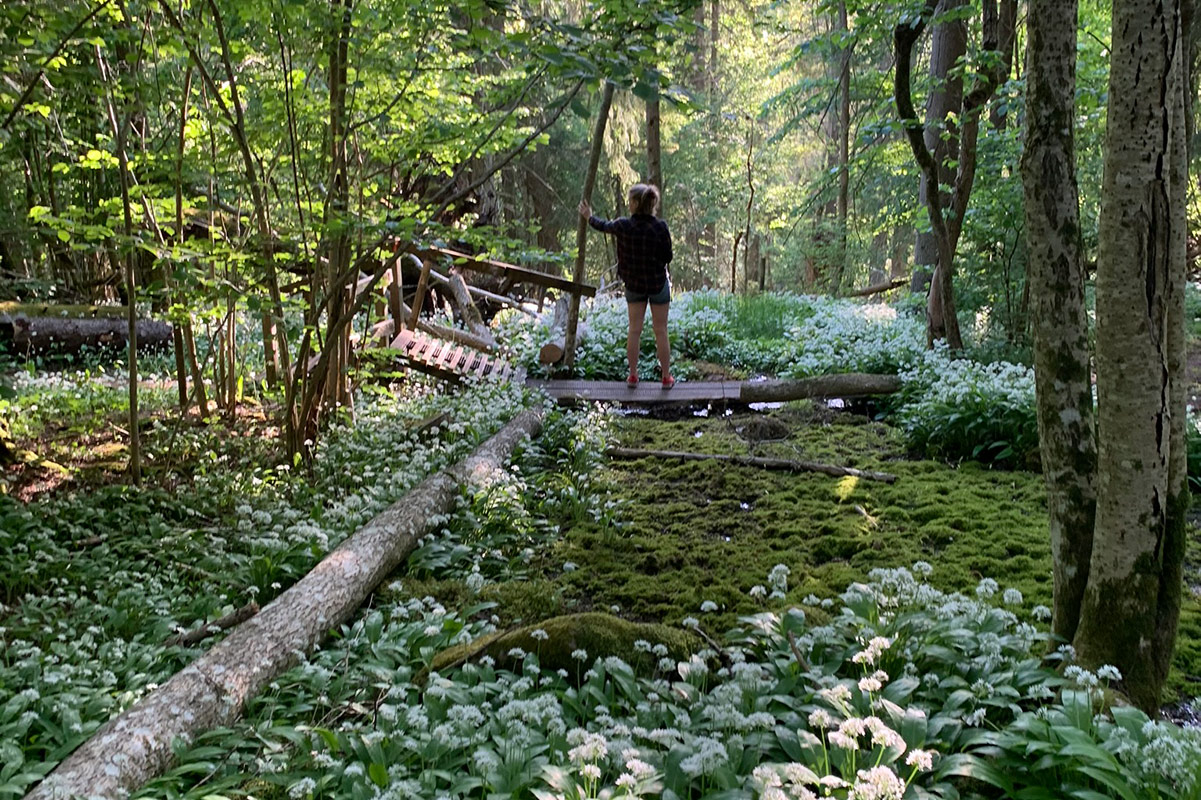
Tufa is a white or yellowish porous rock that consists of calcium carbonate. It is formed when water dissolves calcium as it flows through calcareous rock. As the alkaline water reaches the surface, calcium carbonate is precipitated. The precipitate can encapsulate plants and other materials that happen to be in its path. When there is much precipitation, it will create tufa and it may contain plant parts and other objects. This process shows us how fossils are created. When the biological material has disappeared, the imprints are left as cavities in the tufa. These imprints are often very detailed, and studies of plant imprints in tufa have been of great importance to our understanding of how our flora wandered in.
The alkaline soil provides conditions for a rich flora. Herbs thriving here include yellow wood anemone, pale wood violet, and wild garlic. Melldala is also home to an interesting moss and lichen flora. For example, you can find the rare tufa-moss. The Billingen Trail runs through the reserve, which you can reach either by walking from Högsbola meadows to the north or from Silverfallet to the south.



